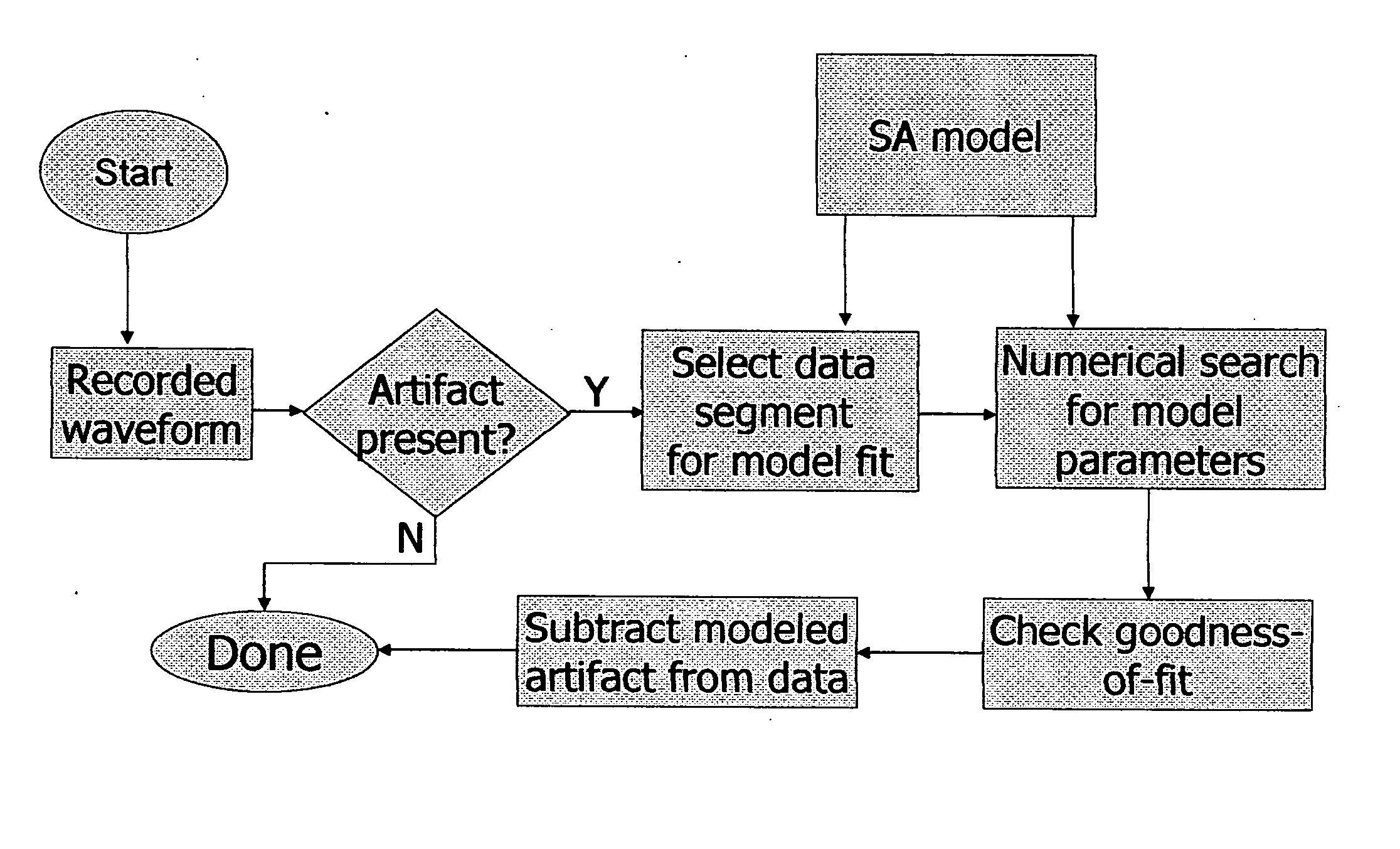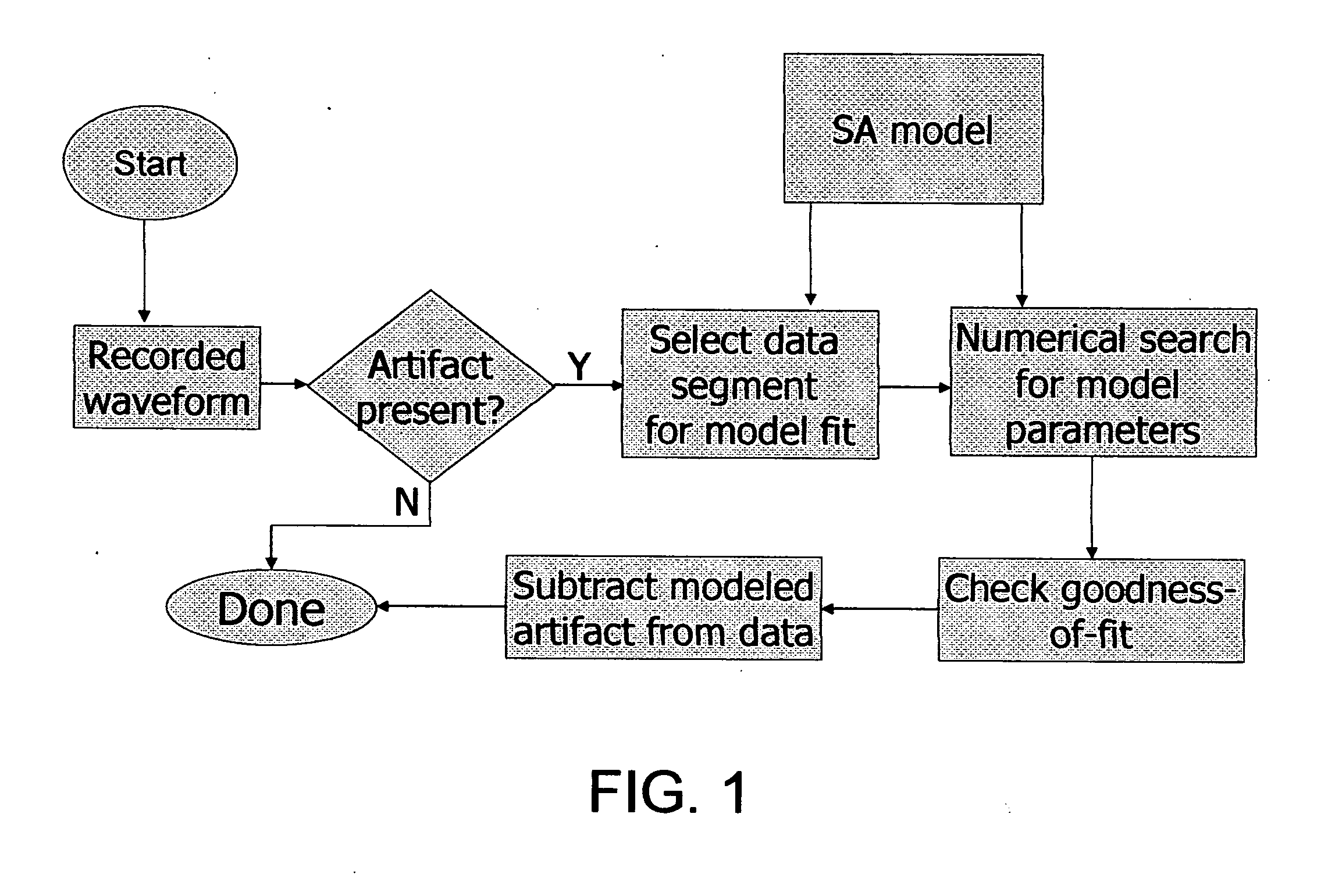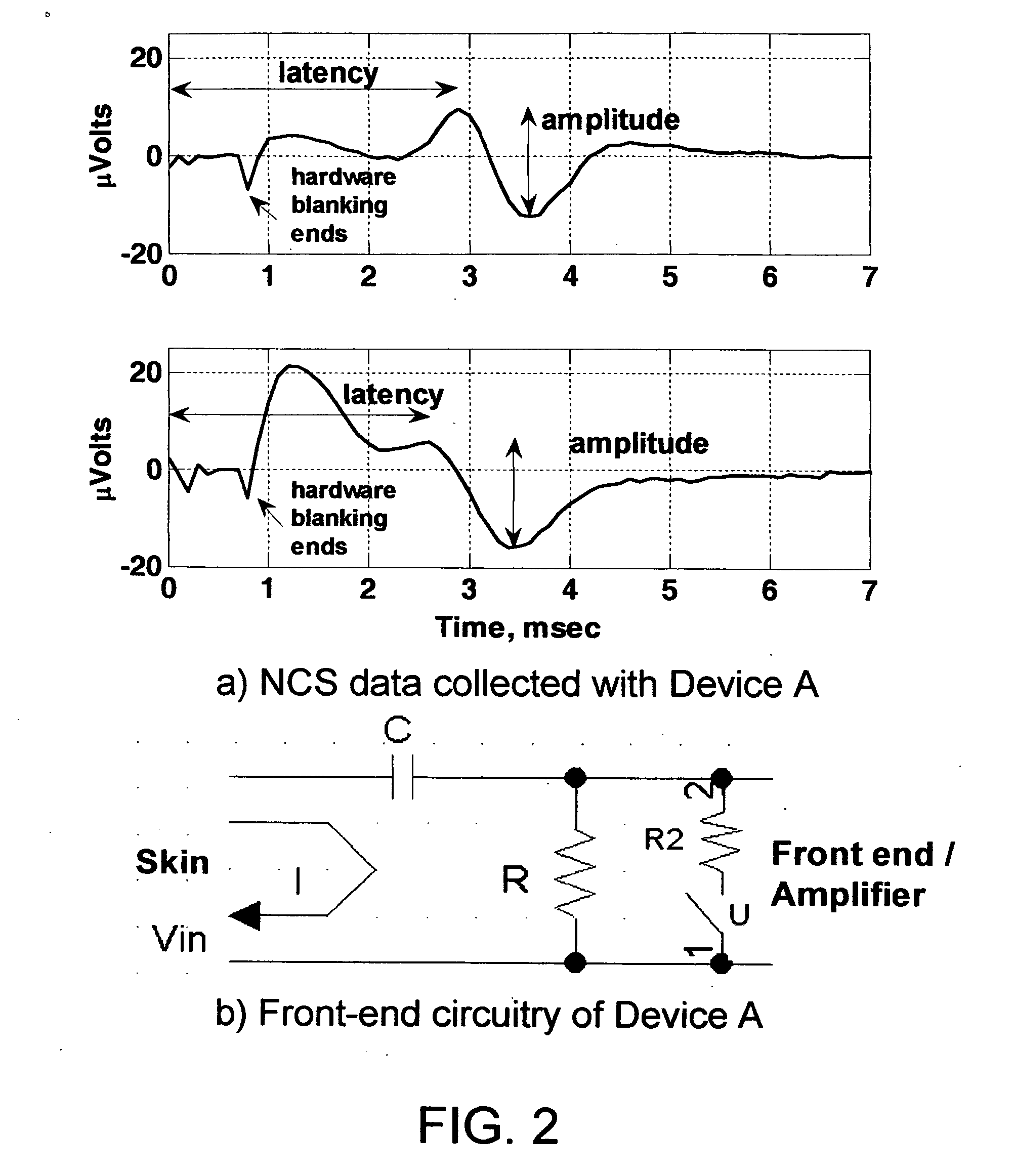Automated stimulus artifact removal for nerve conduction studies
- Summary
- Abstract
- Description
- Claims
- Application Information
AI Technical Summary
Benefits of technology
Problems solved by technology
Method used
Image
Examples
first embodiment
[0170] In this procedure, a requirement may be imposed that SA removal be successful on a number of successive waveforms with similar stimulus parameters. If the algorithm judges that a good fit is achieved on multiple traces, the probability is higher that the SA model accurately describes the data.
second embodiment
[0171] In a second embodiment, SA parameter estimates obtained using one waveform may be used when estimating SA parameters for a second waveform. For example, an assumption may be made that the time constant for a decaying exponential will be nearly identical on subsequent waveforms. This may be used to constrain the estimation process.
[0172] Note that for some electrode locations, there may be more or less variation in the SA seen in waveforms with similar stimulation parameters. In situations where SA varies noticeably between stimuli, SA removal may be applied before any waveform averaging is carried out. After SA is removed from multiple waveforms, the corrected waveforms are averaged to create data for further analysis.
PUM
 Login to view more
Login to view more Abstract
Description
Claims
Application Information
 Login to view more
Login to view more - R&D Engineer
- R&D Manager
- IP Professional
- Industry Leading Data Capabilities
- Powerful AI technology
- Patent DNA Extraction
Browse by: Latest US Patents, China's latest patents, Technical Efficacy Thesaurus, Application Domain, Technology Topic.
© 2024 PatSnap. All rights reserved.Legal|Privacy policy|Modern Slavery Act Transparency Statement|Sitemap



